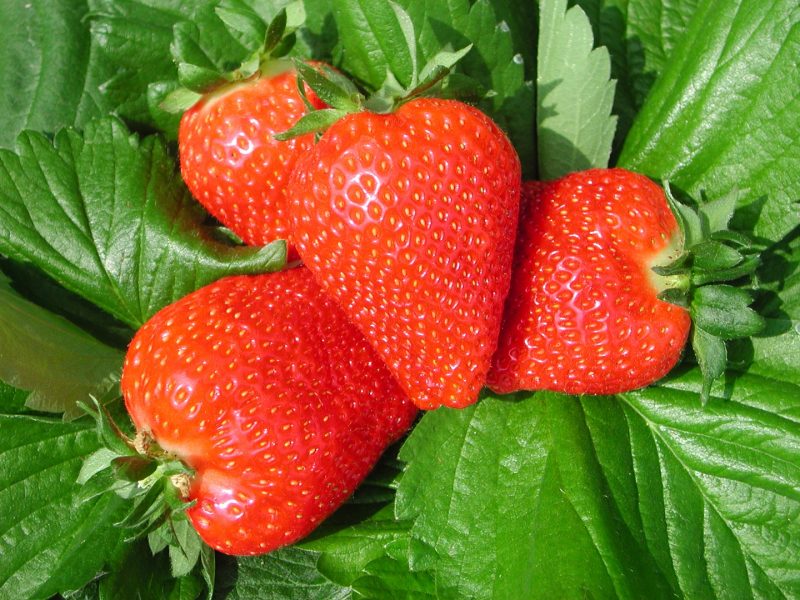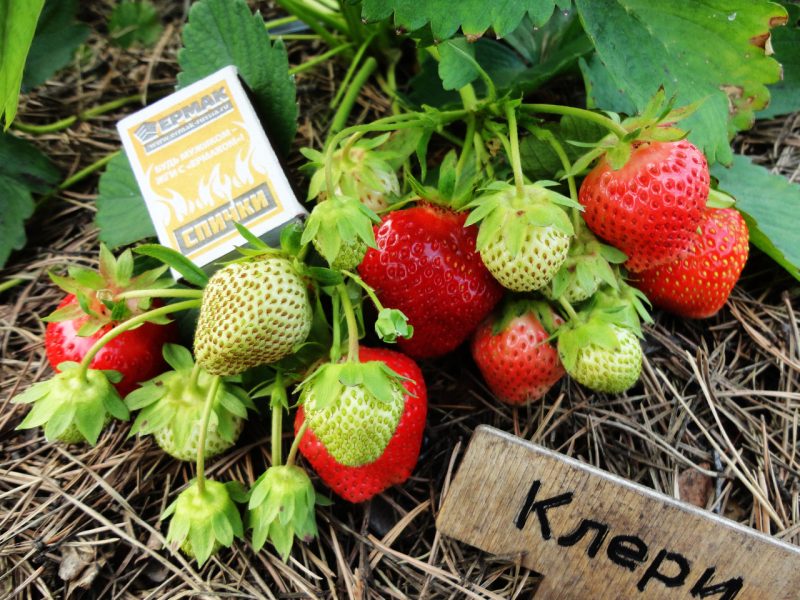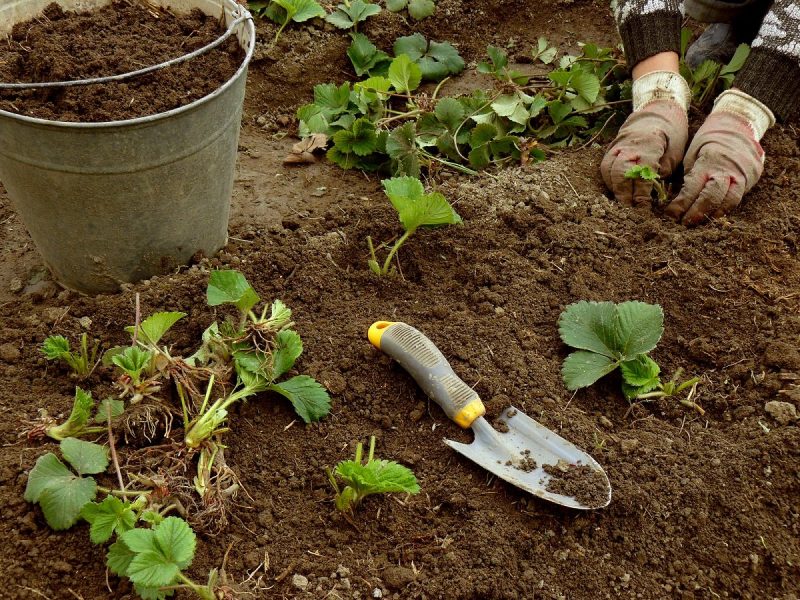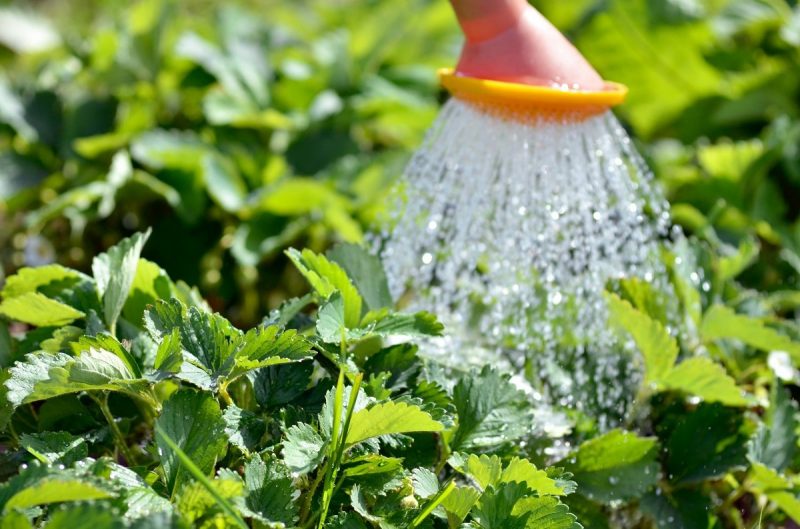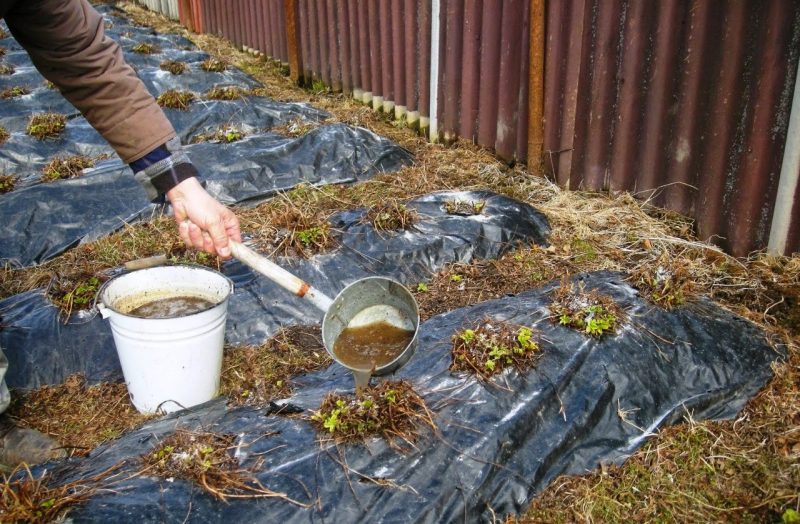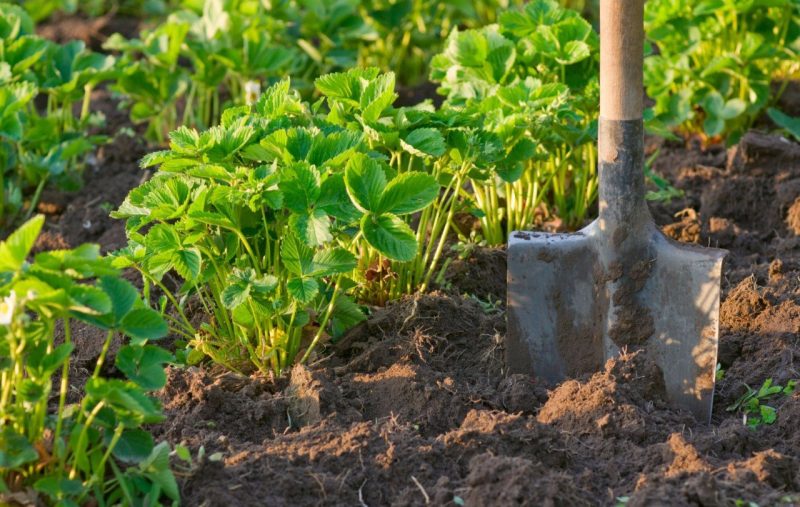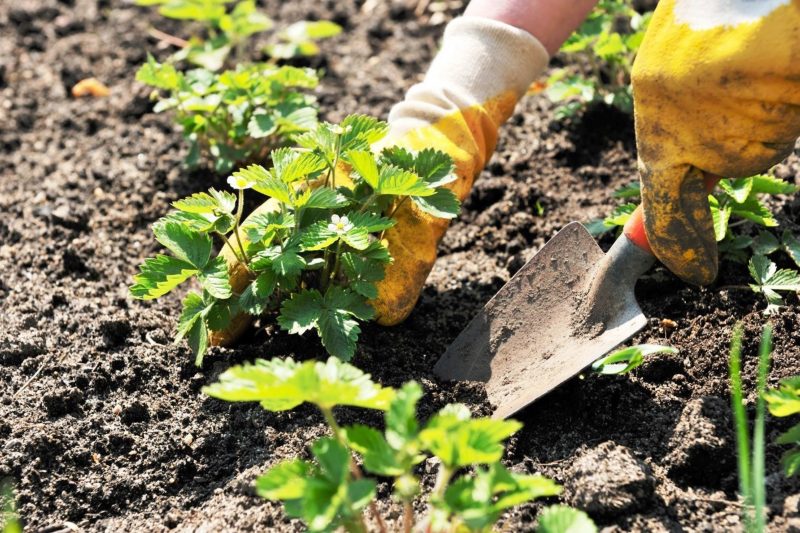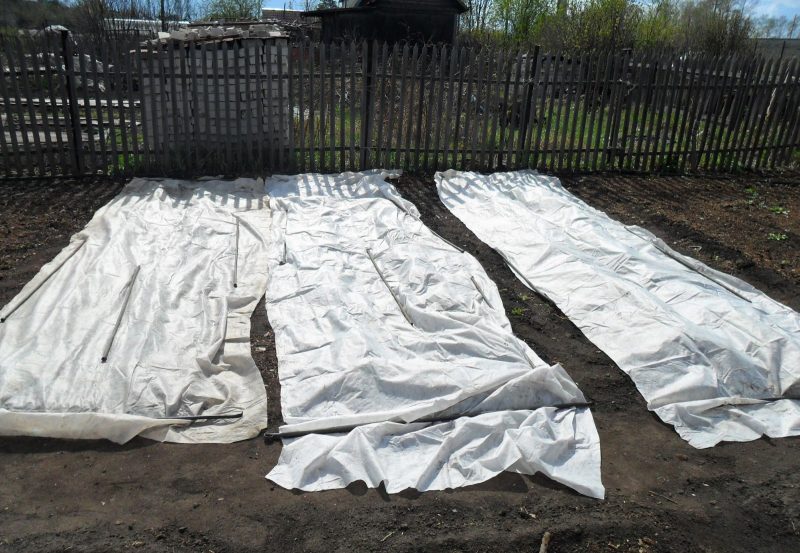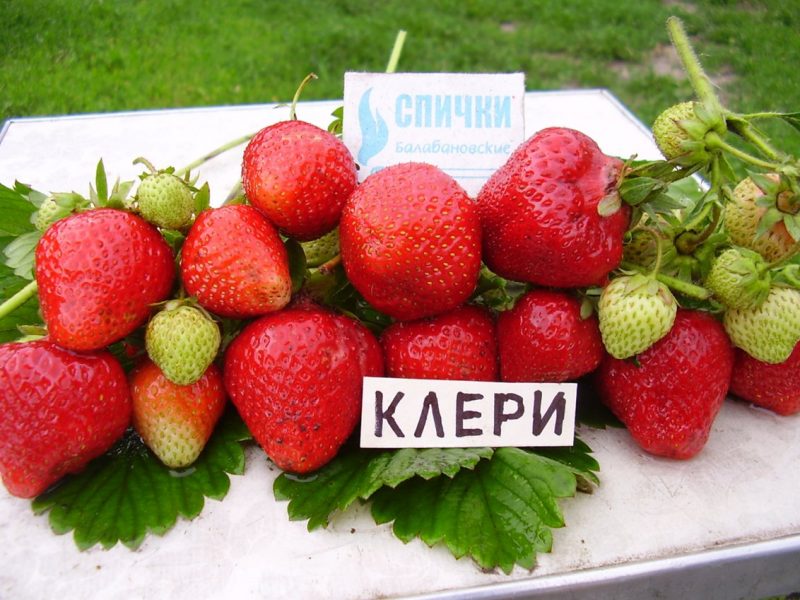When choosing strawberries from a wide range of new promising or proven for years varieties, one should take into account both the characteristics of the latter and the agro-climatic conditions of the cultivation region. In this article, we consider the features of growing Clery's strawberries and the possibility of obtaining a high crop yield.
Material Content:
Description of the strawberry variety Clery
The Clery variety, distinguished by early fruiting periods (late spring-early summer), is represented by compact bushes with bright green foliage, a large number of mustaches. During flowering, you can observe many peduncles with white flowers that are on the same level with the leaves. In their place, subsequently, bright red berries with a glossy sheen are formed, which exude a pleasant aroma.
Due to the dense pulp, characterized by high qualities of taste, the fruits easily tolerate long-term transportation. The declared yield of the result of breeding work of Italians is 200 kg per ha with a mass of one berry in 25 g.
Features of growing in a summer cottage
In order to maximize the yield from the bush, it is necessary to comply with the agrotechnical requirements for the cultivation of Clery strawberries.
Landing work
Planting is recommended in spring or early autumn, so that the seedlings have time to take root. For the Clery strawberries, well-lit areas are selected on which low beds are prepared, since the variety needs moist soil both during flowering and when fruit is being poured. The soil should be light, loose and have a good fertile layer.
The beds are prepared 2 weeks before direct planting by digging and making compost, humus and a small amount of pitch in the case when the soil is quite heavy. Further the earth is leveled.
When the threat of freezing frost has passed, you can start planting seedlings in open ground:
- Wells are prepared according to a 30x50 cm pattern, where the last value refers to the row-spacing.
- If necessary, superphosphate is added to the pits, which is crushed by the soil.
- Next, seedlings with spread roots, which are sprinkled with extracted earth, are lowered.
- Landings are watered and trunks are covered with mulch.
Attention! When planting, you should pay attention to the deepening of the root neck: the heart should be flush with the surface of the soil.
Strawberry Care
After the planting is completed, strawberries need to be organized with appropriate care, including a number of mandatory activities.
Despite the fact that the variety is declared as drought tolerant, to obtain high yields in areas with a dry climate, it is recommended to organize drip irrigation, in which the soil will always be moistened. Normal irrigation should be carried out only by the intra-soil method without water getting on the shoots.
Regardless of whether it is repairing or not, the Clery strawberry needs systematic top dressing. In the spring, to quickly build up the green mass, you should feed the plantings with nitrogen. During flowering, phosphorus and potassium are introduced into the fertilizing composition, and the proportion of nitrogen-containing fertilizers is significantly reduced. In autumn, it is recommended to stay on potassium sulfate, which helps to prepare the culture for the winter period.
Other important activities are loosening, which provides free access of oxygen to the roots, mulching, which prevents intensive evaporation of moisture reserves, and weeding, which is carried out as necessary. Since weeds take food away from cultivated plants, special attention must be paid to controlling it. As a result of weed planting, crop losses can reach 30-50%.
Since after 4 years the berries begin to grow smaller, the variety should be transplanted periodically, not forgetting that strawberries do not like such predecessors as solanaceous, pumpkin crops and cabbage.
Pest and Disease Treatment
According to the characteristics of the Clery strawberry, shoots may show spots of various sizes and colors, indicating plant damage by anthracnose. To avoid the development of fungus, it is necessary to treat the berry plantings with Bordeaux liquid before flowering in 2 or 3 stages with an interval of 7-10 days. If the bushes are already affected, then you should resort to spraying strawberries with fungicides such as Ridomil Gold or Switch.
Pests can also attack bushes. The most common are aphids, strawberry mites and weevils. To combat them, an insecticide is suitable, the use of which is possible before the formation of fruits. If the use of chemical plant protection products is impossible, then you can try to cope with aphids by spraying the plantings with soapy water, and with weevil - applying tobacco ash to the shoots.
Preparing strawberries for the winter
Since the Clery is not tolerant of frost, the landing should be well protected from the coming cold. In mid-autumn, all plant residues that are burned are removed from the beds. Strawberries are covered with fallen garden foliage and special covering material, which, if available, can be replaced with fir spruce branches. It is worth noting that the variety belongs to the cultures of short daylight hours; therefore, it is not cultivated in the northern cold regions.
Advantages and disadvantages of the variety
Among the undeniable advantages of the Clery variety, the following stand out:
- high productivity;
- drought tolerance;
- self-pollination;
- high reproduction rate;
- undemanding;
- high taste and marketability.
The disadvantages include the non-maintenance of the variety, the early flowering period at which there is a risk of night frost return, as well as poor frost resistance.
If the gardener responsibly approaches all the agrotechnical requirements of the Clery strawberry, the variety will thank him with stable crops of early and very sweet berries.


